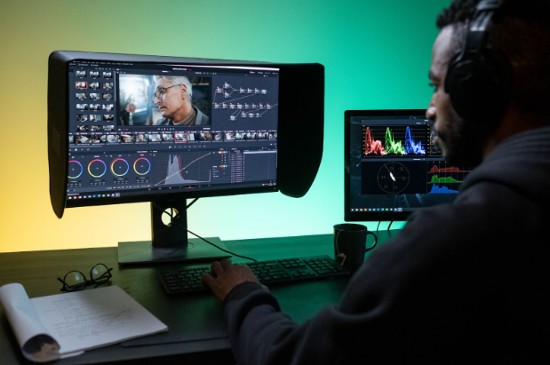When you watch the film credits roll after a movie, one of the categories acknowledged is the post-production team who renders the final product seen on screen. The use of computers and computer-generated graphics is commonplace today to make action heroes fly and do extraordinary feats that no actor other than Tom Cruise would attempt in reality.
In this posting, from Cris Mark Baroro of VEED.io, a video-editing software company, he describes the shape of things to come using artificial intelligence (AI) in video post-production. Whether creating a video for a social media channel, or film, VEED, has a post-production toolkit to cover editing, recording, subtitles and transcription. So what’s left? The introduction of a new player, AI, in the post-production world.
As a Washington Post headline stated this week, “AI is having its moment.” That’s why the AI teams at Google and Microsoft have been invited to the White House this week to talk about AI’s future. One thing for certain, for video production, unless using it to produce misinformation, this use of AI seems pretty benign.
For several years we have seen our fair share of news stories about AI and how it contributes to engineering, programming, gaming, robotics, filmmaking, and now even the writing of articles and even blog postings. But specifically, how can it make life simpler for content creators and video editors?
How much work goes into post-production in film and video? Raw footage needs rendering, special effects applied, and more. Now there are new tools to integrate machine learning, a form of AI, into colour correction and audio mixing. But there is more to come as AI software development accelerates.
AI Changes the Basic Video Editing Process
The film, television, and video game industries rely on editors to cut together footage for movies, commercials, and video games. But AI can now be used by movie studios to edit the footage and enhance it. In some cases, the process is fully automated using an AI algorithm that finds the best shots and strings them together without human intervention. This activity, known as “storyboarding” was previously done manually by editors who watched every shot, wrote down descriptions of each scene, and recorded existing and desired length. Now, AI is doing more and more of the job including effects processing, colour correction, audio track mixing, and graphic overlays onto the video stream. It is also being used to optimize clips, pictures, and animations like GIFs and JPEGs already shrunk using a GIF compressor. This produces custom editing that is smooth and instantaneous.
Jobs in video editing that AI can do include:
- Speeding up or slowing down footage instantly – With one click an editor can approve AI when speeding up or slowing video sequences. The AI software allows for modifying pacing without needing to re-record. It can be especially useful in building drama in a scene. It also can remove pauses and hesitations from recorded speech.
- Editing complicated shots quickly – AI software can analyze every frame in a video to know what needs fixing before beginning to make changes. This eliminates guesswork and makes it much easier to cut out unwanted objects such as someone walking into a shot, shaky camera movements, or needed lighting adjustments. No manual intervention is required.
- Saving time on tedious tasks – AI software can keep track of everything that needs fixing in a long video. It then can automatically fix problems such as audio, lighting and poor sound quality.
- Making the most of your computer’s power – AI editing software can work in the background using the horsepower of an existing computing system without stopping the user from doing other work on the system.
- Achieving professional-level quality – There is no learning curve to using these AI software tools. Simply follow the simple instructions and it will do the editing like a pro.
Designing Videos with AI
AI can do more than just post-production chores. If creating a video, an editor or producer can write a commentary from a minute to an hour in length and then let the AI go to work. Utilize any video creation device, even a mobile phone, to create a sequence of clips. You can use Adobe After Effects (AE), free text-to-speech tools like Google Assistant or Apple Siri, and create a draft. Copy and paste the script and let the AI create multiple versions of the video using the scripted words from the draft. Finally, render the video which will take the longest time and use the storage space on a laptop or computer depending on its length. The result is an infinite number of versions featuring different words or phrases. Before saving and uploading to the Internet, use an mp4 compressor to shrink the size of the finished product.
Deep Learning and the Future of Video Editing
Deep learning is a form of AI that uses neural networks. When applied to video production it allows computers to recognize objects in images or videos and then use them in many different ways. With enough training, a computer using deep learning can identify objects in new images, even if it has never been seen before. Deep learning today in video production is used to do face tracking and lip-syncing and can create realistic-looking faces and body movements. The dark side of this is it can create false images who speak using others’ words.
Conclusion
Already current AI software is altering video editing and the post-production process. But a future where it takes over these functions, still currently in the hands of human producers and editors, remains a question. For certain, AI is altering the industry. The key to creating future masterpieces will be a fusion of AI and human creativity.
But more than anything, the use of AI in video production will democratize the field enabling those who are novices to the industry to actively get involved in motion picture creation. So no matter the skill set, the opportunity to create films will become ubiquitous.
















